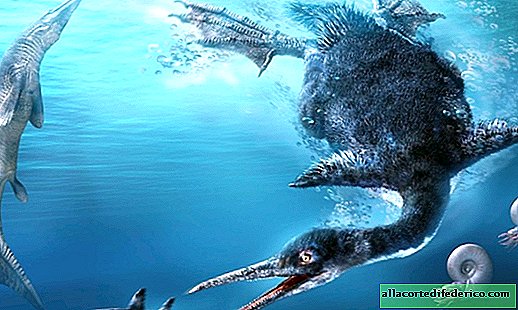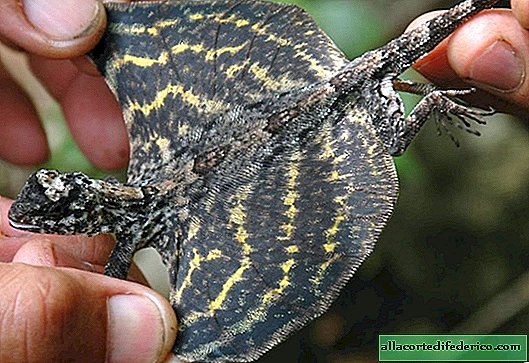What the oldest waterfowl looked like
The history of the emergence of waterfowl is quite long. Today they can cause a touching smile. But millions of years ago, such a bird could well have been armed with sharp teeth in its beak and posed a serious danger to the fish, as it knew how to swim underwater. Recently, the remains of the oldest representative of such terrible creatures to date have been found in northern Japan.
Floating but not walking
The new species, called Chupkaornis keraorum, belongs to a group of ancient birds - Hesperornis. These birds lived in the Cretaceous period (90-84 million years ago), when dinosaurs still roamed the earth. Chupkaornis keraorum did not know how to fly, but they felt great in the water. Before, fossil birds of the Hesperornis group were hardly found in the eastern part of Eurasia.

In the photo: Chupkaornis keraorum
Studies have shown that the bird was the size of a large duck and skillfully hunted fish, for which it dived into the water, grabbing with sharp teeth. Strong paws helped her in this. The wings, on the contrary, were poorly developed, so a toothy bird could not fly. Like walking, by the way: Chupkaornis keraorum was much better at swimming and diving than walking on land. So if the bird went far from the coast, it could easily become prey for dinosaurs.
Random find
Scientists learned about the birds of the Hesperornis group back in the late 19th century, when Yale University paleontologist stumbled upon the remains of one of the birds in Kansas (the inland sea covered the middle of America during the Cretaceous period). Since then, several specimens of an ancient diving bird have been discovered in North America. In Asia, they came across rarely. Therefore, the discovery of a new species of Chupkaornis suggests that these birds scattered on the east coast of Asia no later than 90-84 million years ago.

Pictured: Flexomornis howei
By the way, the remains of Chupkaornis keraorum were not discovered by paleontologists at all. Two brothers absolutely stumbled upon them, who were walking along the old reservoir, and carried to a local university. Ancient fossils often find people far from science. For example, one of the most significant fossils in the Perot Museum was found by a simple Texas resident who loved exploring an old riverbed near Grapevine Lake. This fossil was found to be representative of the species Flexomornis howei and is one of the oldest known fossils of ancient birds in North America.
Therefore, the next time you walk, take a closer look under your feet! Suddenly, too, discover some secret of the past.

















